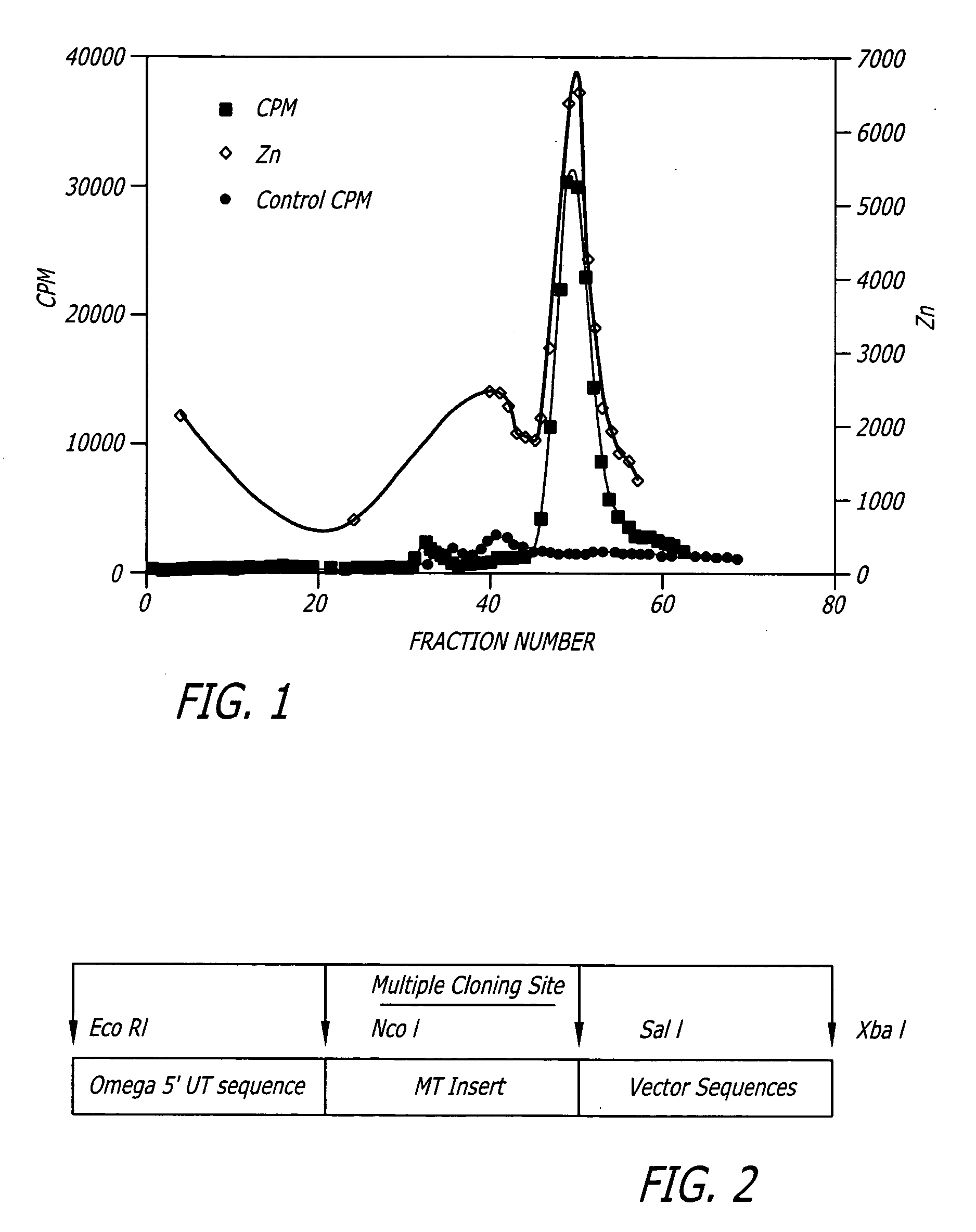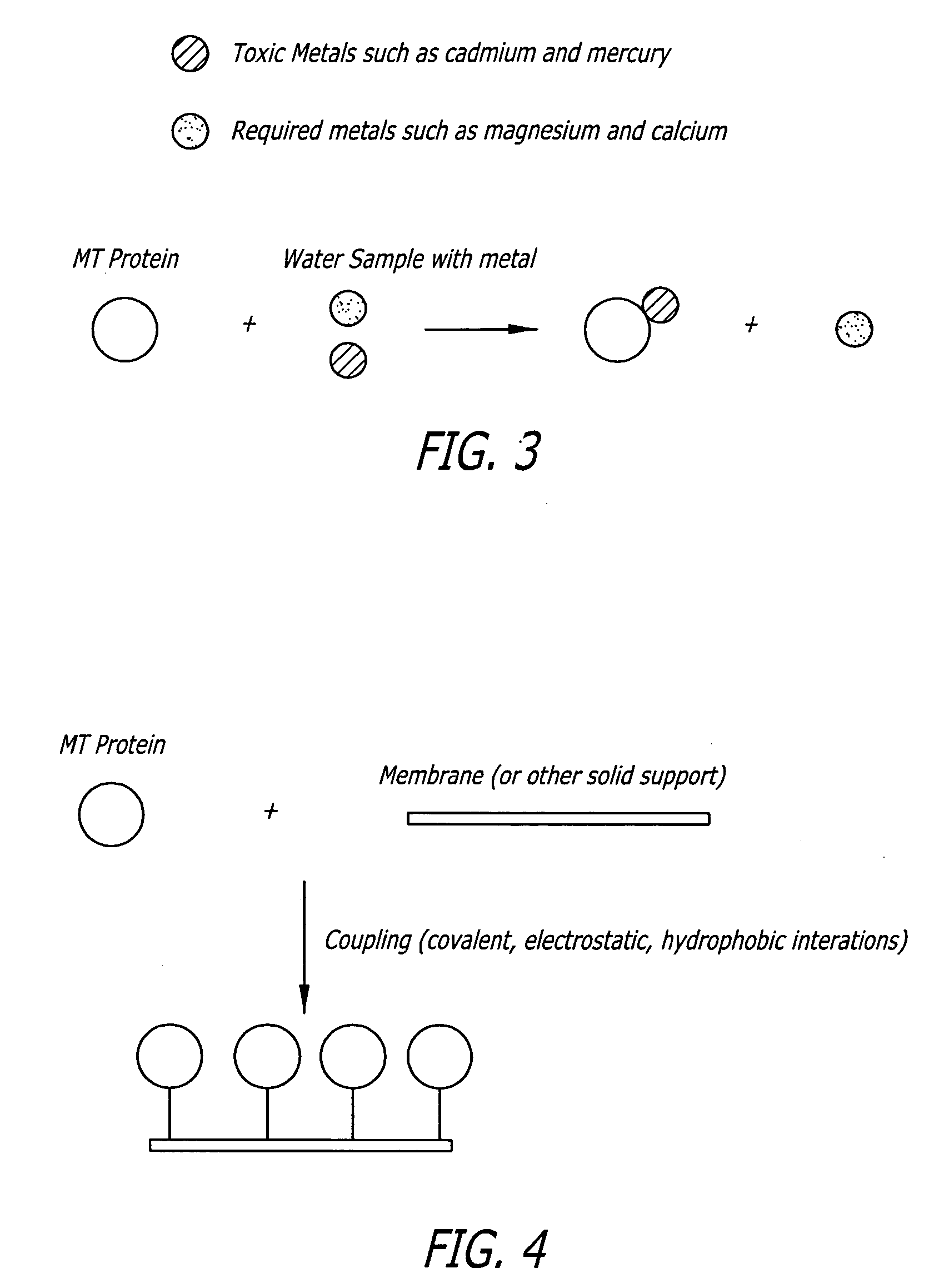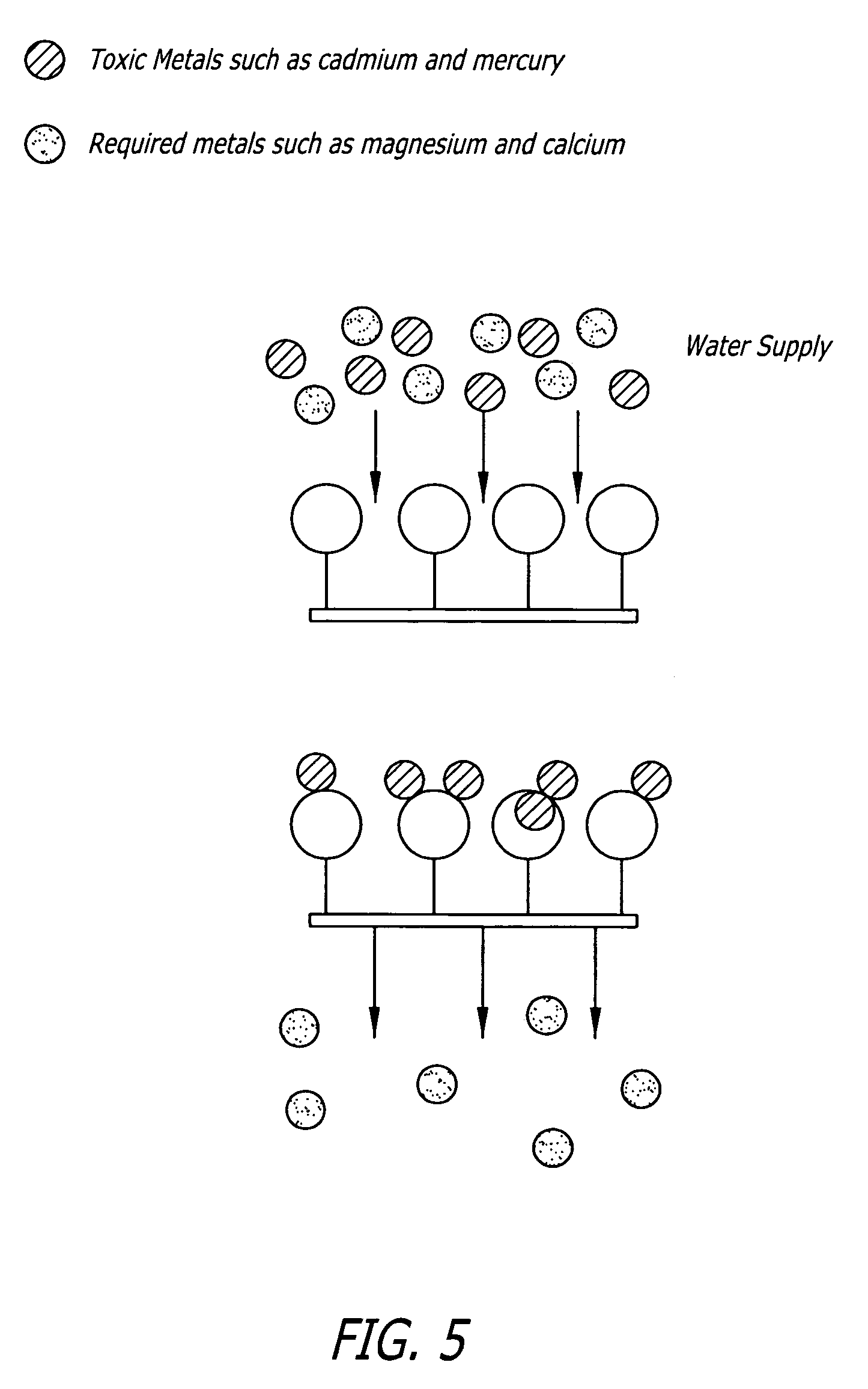Compositions and methods for removing heavy metals from contaminated samples using membranes provided with purified metallothionein (MT) proteins
a technology of mt proteins and heavy metals, which is applied in the direction of combustion air/fuel air treatment, machine/engine, combustion gas purification/modification, etc., can solve the problems of enormous cost, environmental pollution, and published reports of damage to wildlife, livestock, and plant life, and achieve safe removal and recovery of heavy metals, high binding affinity for heavy metals, and high safety
- Summary
- Abstract
- Description
- Claims
- Application Information
AI Technical Summary
Benefits of technology
Problems solved by technology
Method used
Image
Examples
example 1
[0091]In accordance to the teachings of the present invention, the following exemplary protocols illustrate methods useful in the production, purification and analysis of the metal binding proteins of the present invention.
[0092]As a preliminary step in the isolation of the metal binding proteins, Artemia brine shrimp were grown in artificial seawater (AS) (422.7 mM NaCl, 7.24 mM KCL, 22.58 mM MgCl2.6H2O, 25.52 mM MgSO4.7H2O, 1.33 mM CaCl2.2H2O and 0.476 mM NaHCO3). Artemia cysts (2.5 g) were incubated for 48 hours in 250 mL of AS supplemented with antibiotics at 30° C. and rotation at 125 rpm. After 24 hrs, phototropic Artemia were collected, cultured for an additional 24 hrs and then collected by cloth filtration. The shrimp were weighed and if not used immediately, stored at −80° C.
[0093]The Artemia were then homogenized in homogenization buffer (HB) (10 mM Tris-HCl (pH 8.0), 0.1 mM DTT, 0.5 mM PMSF and 10 μg / ml Soybean Trypsin Inhibitor) and resuspended in HB a...
example 2
Cloning and Sequencing of a Gene Encoding Artemia Metal Binding Protein
[0097]Total RNA was isolated from 48 hour nauplii (the larval stage of Artemia) using the RNAzol method. Forty-eight hour nauplii samples were prepared as described above in Example 1. The PolyTract Procedure (Promega, Wis.) was then used to isolate mRNA from the total RNA samples. cDNA was generated from the mRNA using SuperScript and 3′ RACE Kit procedures (Cat #18373, Gibco / BRL, WI) and then subjected to the following synthesis reaction.
[0098]
cDNA synthesis reaction:Artemia mRNA25μl (500 ng)DEPC H2O30μl10 μM AP5μl
[0099]The above mixture was incubated for 10 min at 70° C., then placed on ice for 1-2 min. Volatilized liquid was collected by centrifugation for 10 sec at 10,000 rpm. The following were then added to the above RNA cocktail to produce a cDNA solution:
[0100]
10× PCR Buffer10μl25 mM MgCl210μl10 mM dNTP5μl0.1 mM DTT10μl
[0101]The above resulting cDNA solution was then mixed and incubated at 42° C. for 5 m...
example 3
Transgenic Tobacco Expression of Artemia MT
[0120]The following provides an exemplary study which can be performed on any of the novel metal binding proteins of the present invention to aid in the verification of a protein as a metal binding protein. For example, the metal binding proteins of the present invention are capable of binding heavy metals such as zinc, cadmium and copper. The ability of an isolated protein to bind heavy metals was described and detailed in the disclosed transformation of E. coli with an exemplary MT of the present invention and shown, as indicated in FIG. 1.
[0121]As described previously, modified organisms useful for producing the novel metal binding proteins of the present invention can be made following the teachings provided herein. An exemplary modified organism includes a transgenic tobacco plant which is particularly useful in the methods described herein.
[0122]The cDNA for MT cloned into TOPO.CR2 vector is referred to as pARTmt. The coding sequence ...
PUM
| Property | Measurement | Unit |
|---|---|---|
| pH | aaaaa | aaaaa |
| pH | aaaaa | aaaaa |
| temperature | aaaaa | aaaaa |
Abstract
Description
Claims
Application Information
 Login to View More
Login to View More - R&D
- Intellectual Property
- Life Sciences
- Materials
- Tech Scout
- Unparalleled Data Quality
- Higher Quality Content
- 60% Fewer Hallucinations
Browse by: Latest US Patents, China's latest patents, Technical Efficacy Thesaurus, Application Domain, Technology Topic, Popular Technical Reports.
© 2025 PatSnap. All rights reserved.Legal|Privacy policy|Modern Slavery Act Transparency Statement|Sitemap|About US| Contact US: help@patsnap.com



